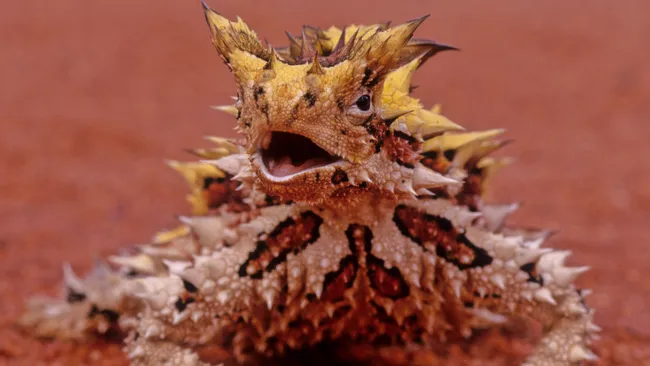Here’s a unique version of the information on the thorny devil:
Name: Thorny Devil (Moloch horridus)
Habitat: Australia
Diet: Ants
Why It’s Remarkable: The thorny devil is a fascinating lizard native to Australia’s arid scrublands and interior deserts. Growing up to 8 inches (20 centimeters) long, this lizard is equipped with remarkable defensive adaptations. One notable feature is the “false head” on the back of its neck. When threatened, the thorny devil tucks its real head between its front legs, presenting the false head to potential predators.
In addition to its deceptive tactics, the thorny devil’s body is covered in sharp, thorn-like spikes that deter predators by making it difficult to grasp or swallow. It can also inflate its chest to appear larger when threatened. Its slow, deliberate movements while foraging or seeking mates may confuse predators, reducing the likelihood of triggering a chase response.
Adapted to survive in extreme heat, thorny devils bury themselves in sand to escape the sun’s intensity. They use specialized channels between their scales to draw moisture from damp sand, directing it to their mouths like a straw. Additionally, their color changes with the temperature: they are a dull brown in the cool mornings and shift to a lighter yellow as the day warms up, reflecting sunlight to avoid overheating. This color change also aids in camouflage.
The thorny devil’s name is inspired by the Canaanite god Moloch from John Milton’s “Paradise Lost,” which describes a deity known for demanding child sacrifices. The scientific name, Moloch horridus, combines “Moloch” with “horridus,” a Latin term meaning rough or dreadful. Although the thorny devil was first exhibited in London in 1840 by naturalist John Gould, zoologist John Gray, who named it in 1841, drew from Milton’s poem for inspiration.
Despite its intimidating appearance, the thorny devil is harmless to humans. Its diet consists mainly of ants, which it captures with a sticky tongue and hard teeth, consuming thousands each day.
